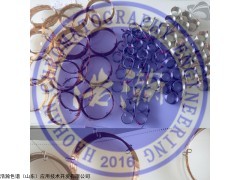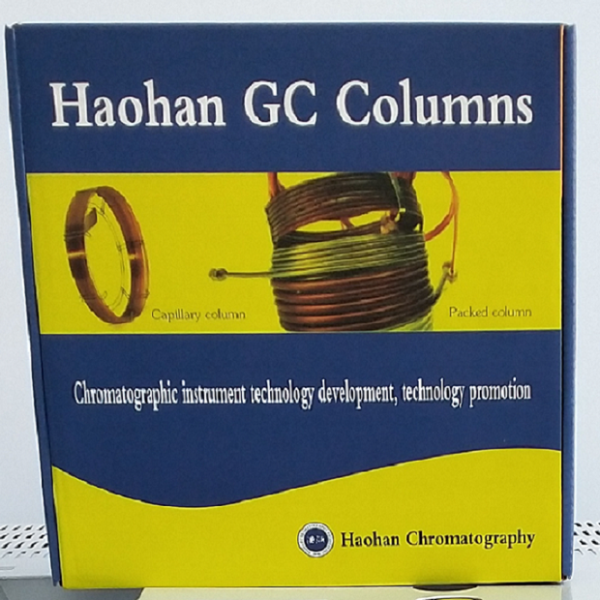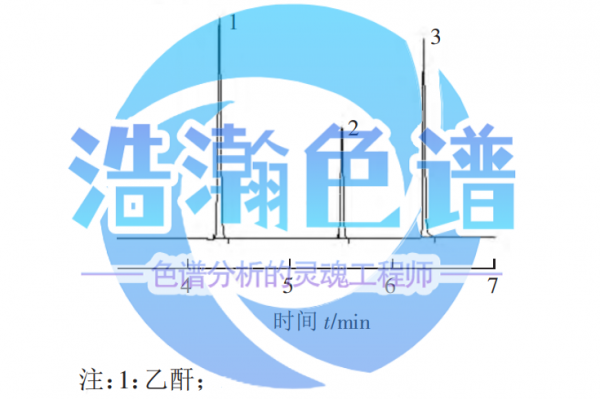
您当前的位置:首页 » 产品展示 » 填充柱 » Tenax填充柱 工作场所空气有毒物质测定乙酸酐

| 产品名称: | Tenax填充柱 工作场所空气有毒物质测定乙酸酐 |
| 产品型号: | Tenax填充柱 |
| 品牌: | 1941 |
| 产品数量: | |
| 产品单价: | 面议 |
| 日期: | 2022-08-25 |
Tenax填充柱 工作场所空气有毒物质测定乙酸酐的详细资料
工作场所空气有毒物质测定乙酸酐工作场所空气有毒物质测定乙酸酐 详细信息:
名称:填充柱
固定相:高分子微球
粒度:60-80目
规格:2M*4MM
型号:Tenax
应用: 工作场所空气有毒物质测定酸酐类化合物测定
1 范围
本标准规定了监测工作场所空气中酸酐类化合物浓度的方法。
本标准适用于工作场所空气中酸酐类化合物浓度的测定。
2 规范性引用文件
下列文件中的条款,通过本标准的引用而成为本标准的条款。凡是注日期的引用文件,其随后所有的修改单(不包括勘误的内容)或修订版均不适用于本标准,然而,鼓励根据本标准达成协议的各方研究是否可使用这些文件的新版本。凡是不注日期的引用文件,其新版本适用于本标准。
GBZ 159 工作场所空气中有害物质监测的采样规范
3 乙酐的溶剂解吸-气相色谱法
3.1 原理
空气中的乙酐用活性碳管采集,丙酮解吸后进样,经色谱柱分离,氢焰离子化检测器检测,以保留时间定性,峰高或峰面积定量。
3.2 仪器
3.2.1 活性碳管,溶剂解吸型,内装100mg/50mg 活性碳。
3.2.2 空气采样器,流量0~500ml/min。
3.2.3 溶剂解吸瓶,5ml。
3.2.4 微量注射器,10l。
仪器操作条件
色 谱 柱:2m×4mm,Tenax;
柱 温:135℃;
汽化室温度:200℃;
检测室温度:200℃;
载气(氮气)流量:35ml/min。
3.3 试剂
3.3.1 丙酮,色谱鉴定无干扰杂峰。
3.3.2 Tenax,60~80目。
3.3.3 标准溶液:于25ml 容量瓶中,加约5ml 丙酮,准确称量后,加入2~3 滴乙酐,再准确称量,用丙酮稀释刻度,由两次称量之差计算溶液的浓度,为标准贮备液。临用前,用丙酮稀释成1.0mg/ml 乙酐标准溶液。或用国家认可的标准溶液配制。
3.4 样品的采集、运输和保存
现场采样按照GBZ 159执行。
3.4.1 短时间采样:在采样点,打开活性碳管两端,以200ml/min 流量采集15min 空气样品。
3.4.2 长时间采样:在采样点,打开活性碳管两端,以50ml/min 流量采集2~8h 空气样品。
3.4.3 个体采样:在采样点,打开活性碳管两端,佩带在采样对象的前胸上部,进气口尽量接近呼吸带,以50ml/min 流量采集2~8h 空气样品。
采样后,立即封闭活性碳管两端,置清洁容器内运输和保存。样品在室温下可保存7d。
3.5 分析步骤
3.5.1 对照试验:将活性碳管带采样点,除不连接空气采样器采集空气样品外,其余操作同样品,作为样品的空白对照。
3.5.2 样品处理:将采过样的前后段活性碳分别倒入溶剂解吸瓶中,加入2.0ml 解吸液,盖紧瓶盖,振摇1min,解吸30min。解吸液供测定。若解吸液中乙酐浓度超过测定范围,可用丙酮稀释后测定,计算时乘以稀释倍数。
3.5.3 标准曲线的绘制:用丙酮稀释标准溶液成0.0、10.0、20.0、50.0、100和500mg/ml乙酐标准系列。参照仪器操作条件,将气相色谱仪调节操作条件,分别进样2.0l,测定各标准系列。每个浓度重复测定3 次。以测得的峰高或峰面积均值对乙酐浓度(mg/ml)绘制标准曲线。
7.4 样品测定:用测定标准系列的操作条件测定样品和空白对照的解吸液;测得的样
品峰高或峰面积值减去空白对照峰高或峰面积值后,由标准曲线得乙酐的浓度(mg/ml)。
工作场所空气有毒物质测定乙酸酐 测试谱图:


Determination of Toxic Substances in Workplace Air for Acetic Anhydride
Determination of Acetic Anhydride for Toxic Substances in Workplace Air Details:
Name: Packed Column
Statio
Granularity: 60-80 mesh
Specifications: 2M*4MM
Model: Tenax
Application: Determination of toxic substances in workplace air Determination of acid anhydride compounds
1 Scope
This standard specifies a method for mo
This standard applies to the determination of the co
2 Normative references
The clauses in the following docu
GBZ 159 Sampling Specifications for Mo
3 Solvent Desorption of Acetic Anhydride-Gas Chromatography
3.1 Principle
Acetic anhydride in the air was collected by activated carbon tube, desorbed by acetone and injected, separated by a chromatographic column, detected by a hydrogen flame io
3.2 Instruments
3.2.1 Activated carbon tube, solvent desorption type, filled with 100mg/50mg activated carbon.
3.2.2 Air sampler, flow rate 0~500ml/min.
3.2.3 Solvent desorption bottle, 5ml.
3.2.4 Micro syringe, 10l.
3.2.5 Gas chromatograph, hydrogen flame io
Instrument operating conditions
Chromatographic column: 2m×4mm, Tenax;
Column temperature: 135℃;
Vaporization chamber temperature: 200℃;
Detection room temperature: 200℃;
Carrier gas (nitrogen) flow: 35ml/min.
3.3 Reagents
3.3.1 Acetone, chromatographic identification without interference peaks.
3.3.2 Tenax, 60-80 mesh.
3.3.3 Standard solution: add a
3.4 Collection, transport and storage of samples
Field sampling is performed in accordance with GBZ 159.
3.4.1 Short-time sampling: at the sampling point, open both ends of the activated carbon tube and collect air samples at a flow rate of 200ml/min for 15min.
3.4.2 Long-term sampling: at the sampling point, open both ends of the activated carbon tube and collect air samples at a flow rate of 50ml/min for 2~8h.
3.4.3 Individual sampling: At the sampling point, open both ends of the activated carbon tube, wear it on the upper chest of the sampling object, with the air inlet as close to the breathing belt as possible, and collect air samples at a flow rate of 50ml/min for 2~8h.
Immediately after sampling, both ends of the activated carbon tube were closed and transported and stored in a clean container. Samples can be stored for 7 days at room temperature.
3.5 Analysis steps
3.5.1 Co
3.5.2 Sample processing: Pour the sampled front and back activated carbons into the solvent desorption bottle respectively, add 2.0ml of desorption solution, close the bottle cap tightly, shake for 1min, and desorb for 30min. Desorbed solution for measurement. If the co
3.5.3 Drawing of the standard curve: Dilute the standard solution with acetone into a standard series of 0.0, 10.0, 20.0, 50.0, 100 and 500 mg/ml acetic anhydride. Referring to the operating co
7.4 Determination of sample: Determination of sample and blank co
After subtracting the blank co
Determination of acetic anhydride for toxic substances in workplace air Test spectrum: